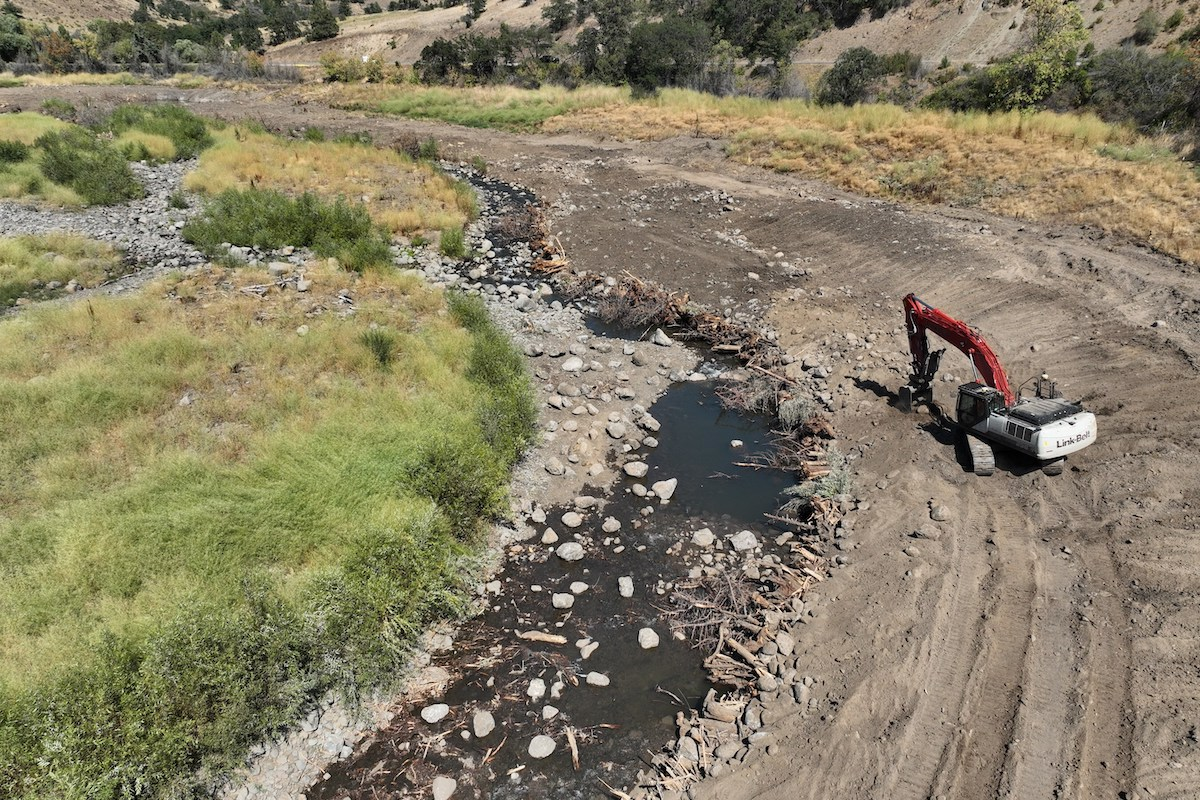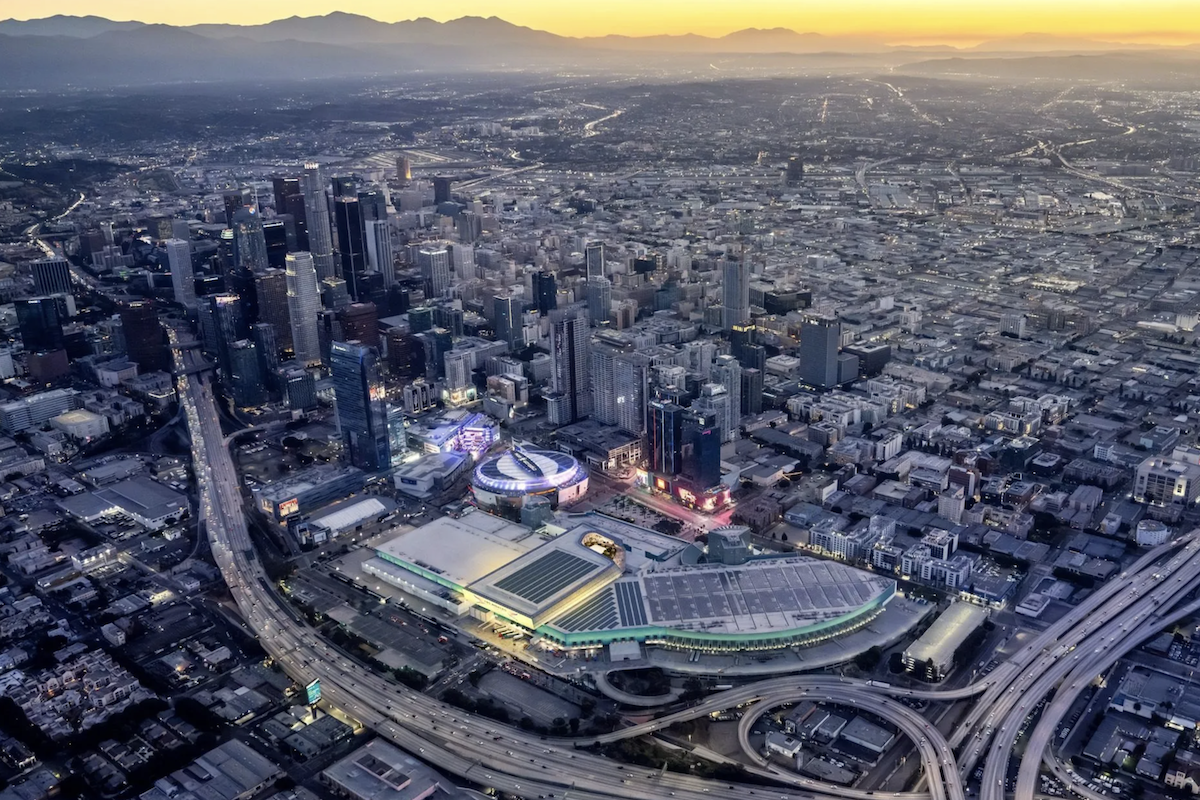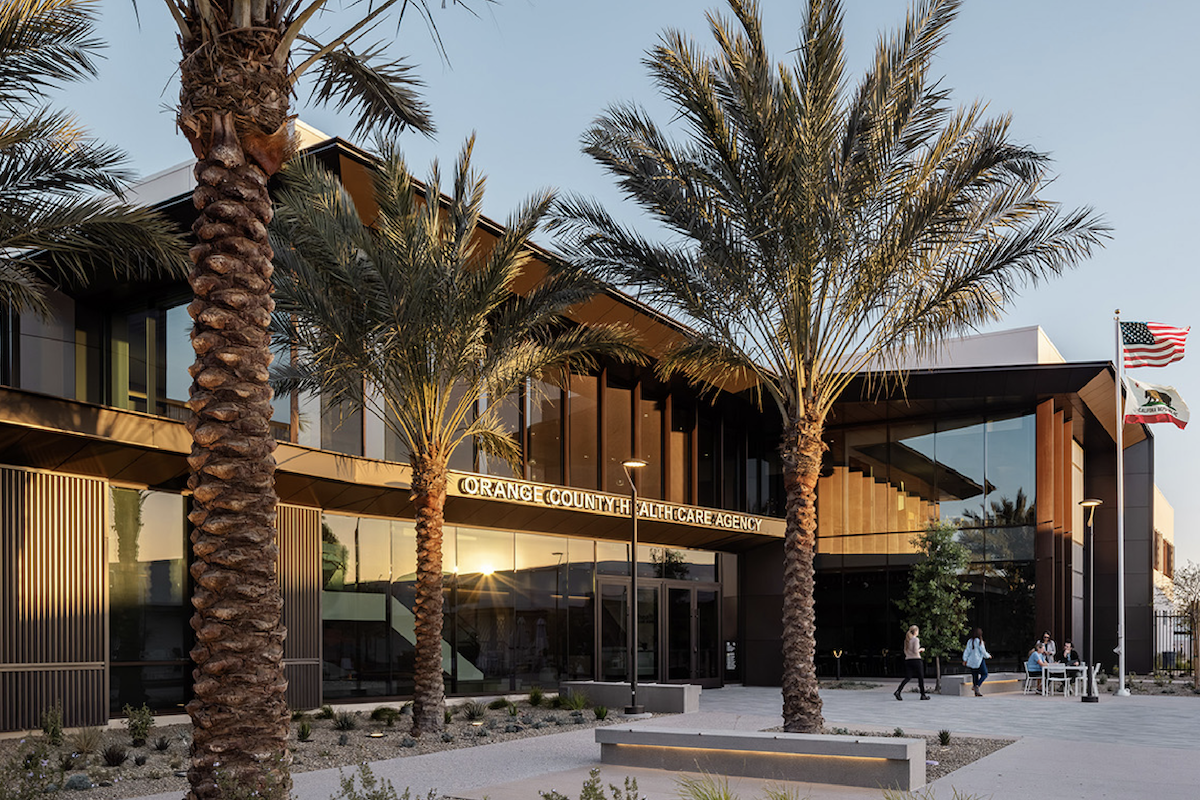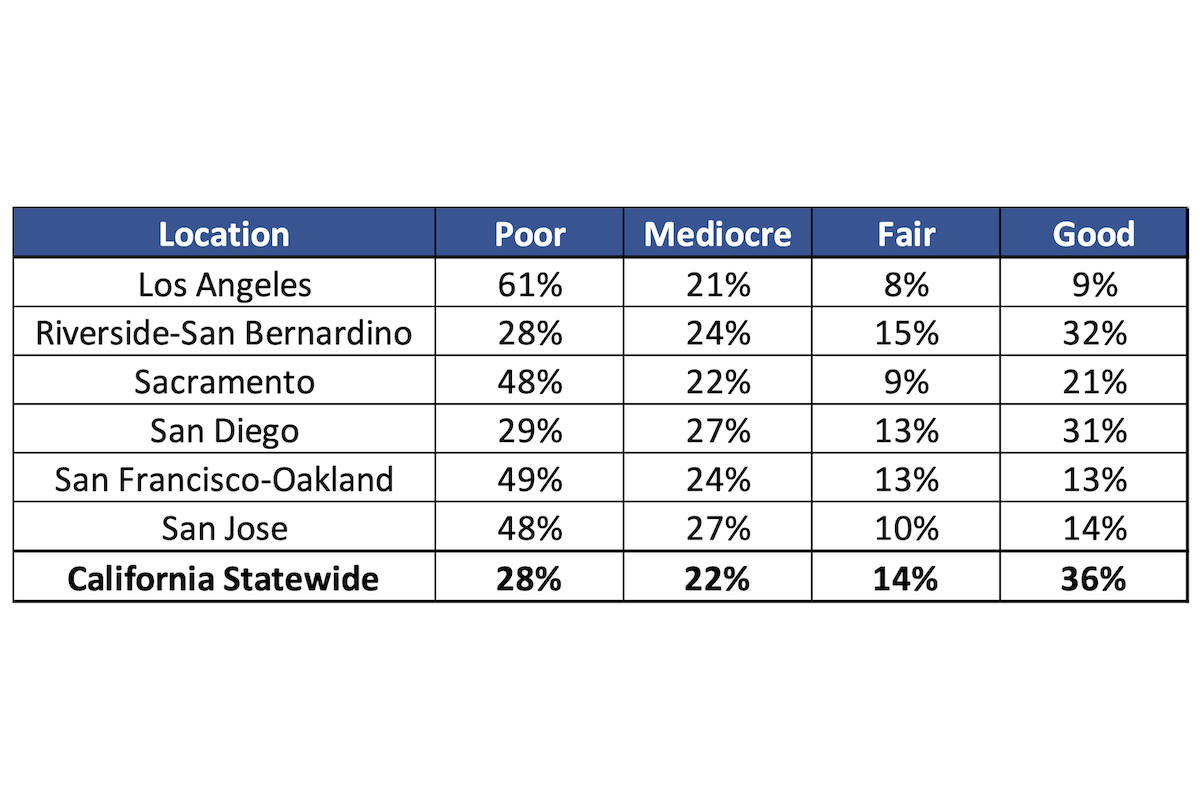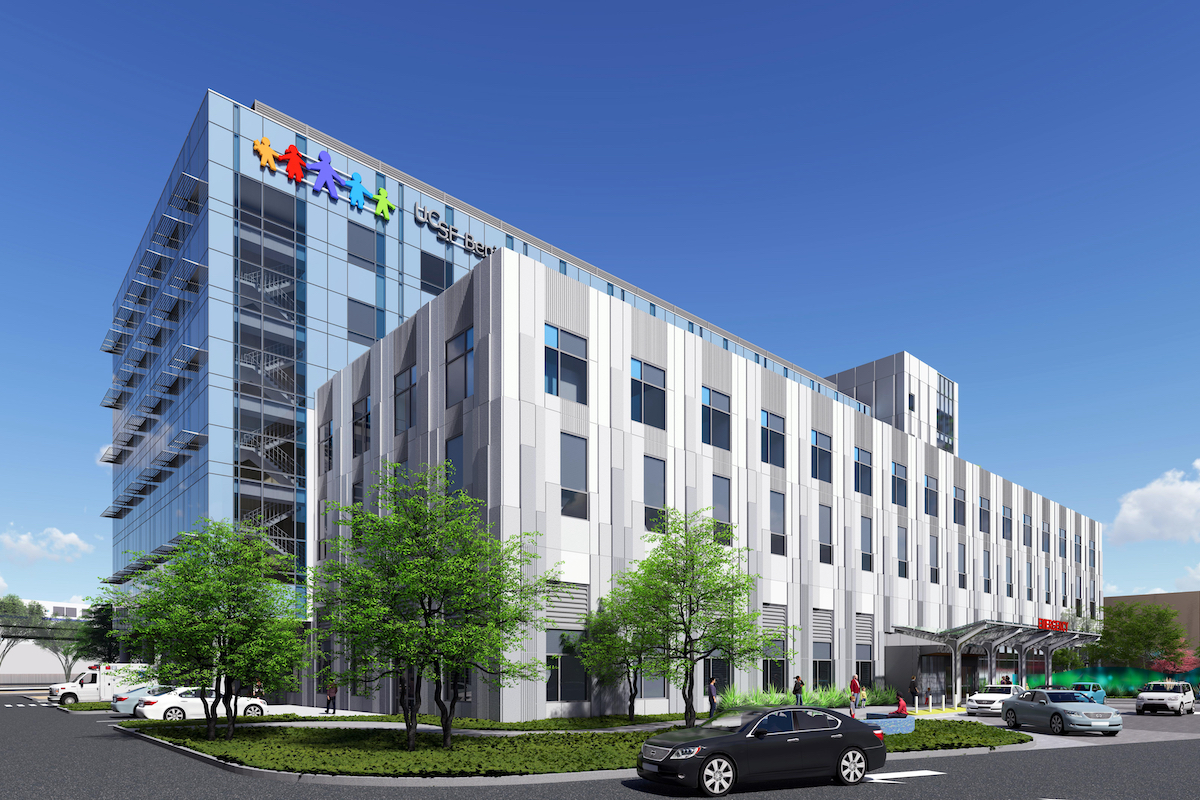“The top layers of rock are very weathered and often come with voids or soil seams just below the surface,” said Andrew Wilder, P.E., Project Engineer for Prime Contractor KCI Construction Company of St. Louis. “Moving 10 feet can change the rock elevation by several feet or shift from sound rock to weathered/voided layers.”
Undocumented utilities and soil issues in the urban site add further challenges, but with extra boring, dynamic pile testing, lightweight fill, and some partial redesign, the project will finish in time to support higher volumes of traffic coming to the area. In 2022, the National Geospatial-Intelligence Agency (NGA) – the primary source of geospatial intelligence for the U.S. Department of Defense and national intelligence community – will relocate nearby, and in 2023 the adjacent Major League Soccer (MLS) stadium currently under construction will host its first season.
Designed to update decades-old entrances and exits to the interstate and the surrounding city grid, the I-64 at Jefferson Interchange project modifies an existing partial interchange and adds a new, full interchange. Short collector-distributer segments between cross streets provide additional access to local roads. Due to improved mobility from those changes, two outdated ramps will be removed.
The Missouri Department of Transportation (MoDOT) awarded the project’s low-bid, $24.35 million contract to KCI in May 2020. Construction started in August 2020.

| Your local Gomaco dealer |
|---|
| Terry Equipment |
For instance, “Rock on the north side of the highway is just barely below the soil, causing the excavation for bridges, retaining walls, and ramp widenings to take a little more time and effort,” Wilder said. “However, some ground improvements were negated due to the plentiful bedrock.”
In contrast, at the east end of the project, “The bedrock is up to 80 feet below ground and often has highly weathered rock within the top 5 to 10 feet of rock depth,” Wilder said.
KCI found the reason for that in historical articles referencing Chouteau’s Pond in the late 1700s to mid-1800s.
“Come to find out, there was an old, 100-plus acre lake right where the bedrock is both the deepest and in the poorest condition,” Wilder said. “That information helped us prepare for constructing deep foundations, constantly working with MoDOT and their designer to make sure the structural design requirements were met in the field.”
In another location, when discovery of an undocumented water main required a partial redesign that shifted the abutment and H-pile by 65 feet, “All parties agreed to do an additional rock boring,” Wilder said. “Previously completed borings showed wide ranges in bedrock within a 100-foot radius, so exact rock estimations helped minimize any lost time during construction of the abutment. The new boring proved that sound rock was about 8 feet lower than the old location, so we ordered extra pile well in advance.”

| Your local Trimble Construction Division dealer |
|---|
| SITECH Southwest |
| SITECH West |
Because of the varying conditions, MoDOT specified dynamic pile testing throughout the project.
“The system uses sensors attached to the pile and software to input existing conditions, pile length, and size,” Wilder said. “Diesel hammer chart information calculates in real-time the forces during pile driving. This process helps determine if the pile is driven to the proper capacity and helps identify any overstressing when we finally hit solid bedrock.”
For instance, “The new outer roads required over 110,000 cubic yards of dirt fill to build up the embankments,” Wilder said. “However, the age and condition of several Metropolitan St. Louis Sewer District (MSD) sewers prevented any excess bearing pressure directly above, so the plans specified lightweight cellular concrete fill for most of those sewers. The deepest dirt fill areas came with minimum settlement periods and monitoring systems ranging from three to six months.”
Over a 9-foot by 7-foot brick arch sewer running through the site, “We had to project a 1:1 slope up from the top corners of the deep MSD sewer and compact dirt on either side of the lightweight zone, creating a bowl for the lightweight crew to fill in 3- to 4-foot-thick lifts,” Wilder explained. “Once each lift set up and cured, the next one could be placed. We had about 5,000 cubic yards of lightweight fill and it took around two working weeks to complete.”
During another dirt fill operation, KCI encountered a 48-inch concrete MSD pipe directly underneath one of the new roads. Because the pipe couldn’t be fully verified to handle excess weight, MoDOT and their designer added a cured-in-place pipe (CIPP) liner for reinforcement, allowing an additional 20 feet of soil to be compacted overhead. KCI hired SAK Construction of O’Fallon, Missouri, to complete the specialized work.

| Your local Gomaco dealer |
|---|
| Terry Equipment |
In the location where the abutment and H-pile shifted to a different rock depth, the team knew that an MSD brick sewer lay close to a drilled shaft foundation.
However, “After performing our subsurface exploration, we also discovered the 30-inch-diameter City of St. Louis water main within the excavation area,” Wilder said. “The age and condition of the old brick sewer prevented any vibration within a reasonable radius without a costly remediation. To make the matter even more challenging, the water main was only 8 feet deep, but the sewer was over 20 feet deep, requiring a costly and complicated temporary shoring design. All of this was directly against the active MetroLink light rail tracks, which posed an even greater liability and risk to the work.”
Ultimately, the partial redesign to avoid the underground utilities and MetroLink impacts proved less costly than the work required to relocate them, Wilder said.
However, “Due to the unplanned CIPP liner work, and coincidentally after the MLS project completion was delayed by a year, we were allowed a spring 2022 completion of the entire north side of the project,” Wilder said. “We still had an agreement with MoDOT and MLS to complete the dirt work in the area by December 31, 2021, so they could finish constructing the new practice facilities.”
Other work in the area also affects the I-64 at Jefferson Interchange project.

| Your local Gomaco dealer |
|---|
| Terry Equipment |
“A number of coordinated projects, some overseen by the City of St. Louis and this one by MoDOT, work together to better address the anticipated higher levels of traffic going to the NGA campus,” explained Jennifer Wade, P.E., MoDOT’s Area Engineer for the City of St. Louis area. “Our design teams have had to coordinate, paying special attention to where the projects connect. Because the projects aren’t being constructed simultaneously, we need to make sure the roadway is left in a usable state.”
- Owner – Missouri Department of Transportation; Jennifer Wade, P.E., MoDOT Area Engineer, City of St. Louis area; Scott Washausen, P.E., MoDOT Resident Engineer, City of St. Louis area
- Prime Contractor – KCI Construction Company, St. Louis, Missouri; Andrew Wilder, P.E., Project Engineer; Justin Cline, Project Director; Cory Patterson, Project Superintendent; Jason Leuthauser, Concrete Superintendent
- Lead Project Designer – HNTB, St. Louis, Missouri
Editor’s Note: This story is part two of our feature on the I-64 at Jefferson Interchange project. Part one appeared in the November issue of Construction Digest.
Photos courtesy of KCI Construction Company



















